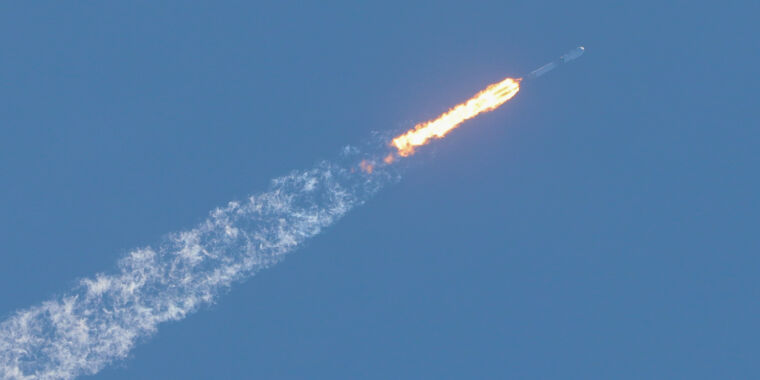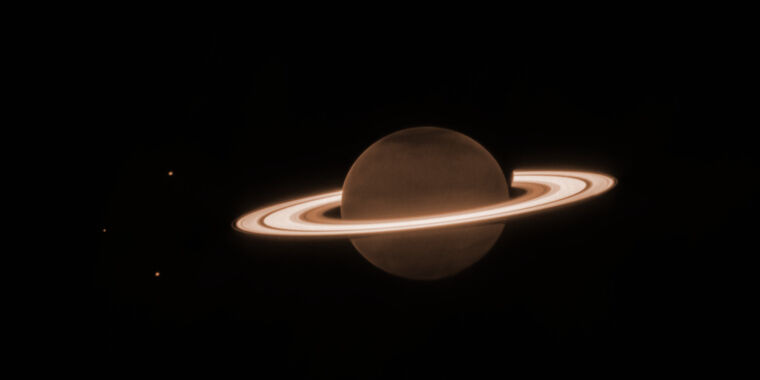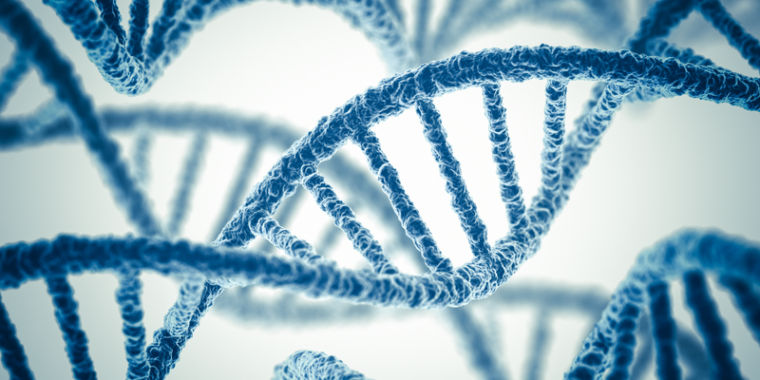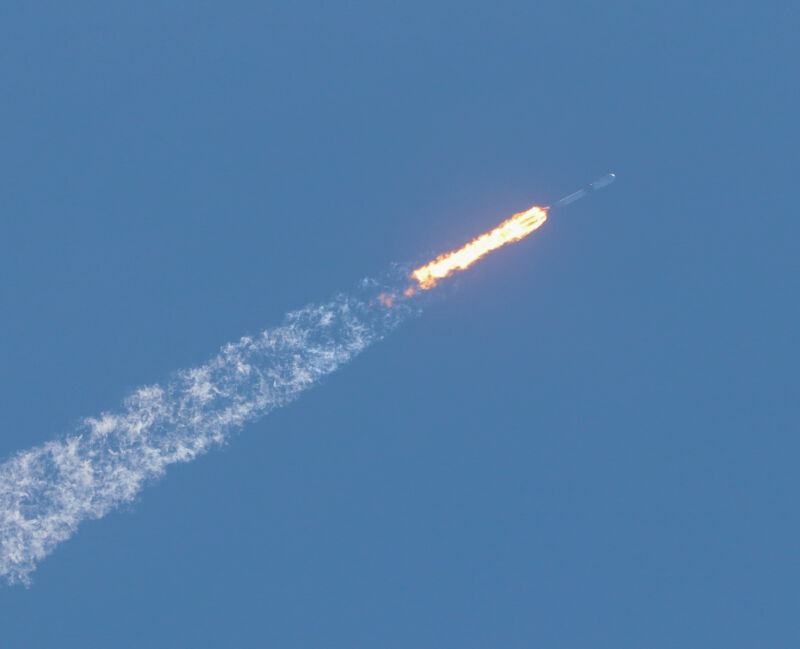
Stephen Clark/Ars Technica
A European Space Agency telescope launched Saturday on top of a SpaceX Falcon 9 rocket from Florida to begin a $1.5 billion mission seeking to answer fundamental questions about the unseen forces driving the expansion of the Universe. The Euclid telescope, named for the ancient Greek mathematician, will observe billions of galaxies during its six-year survey of the sky, measuring their shapes and positions going back 10 billion years, more than 70 percent of cosmic history.
Led by the European Space Agency, the Euclid mission has the ambitious goal of helping astronomers and cosmologists learn about the properties and influence of dark matter and dark energy, which are thought to make up about 95 percent of the Universe. The rest of the cosmos is made of regular atoms and molecules that we can see and touch.
Stumbling in the dark
“To highlight the challenge we face, I would like to give the analogy: It’s very difficult to find a black cat in a dark room, especially if there’s no cat,” said Henk Hoekstra, a professor and cosmologist at Leiden Observatory in the Netherlands. “That’s a little bit of the situation we find ourselves in because we have these observations … But we lack a good theory. So far, nobody has come up with a good explanation for dark matter or dark energy.”
Hoekstra, who is part of the consortium of international scientists eager to work with Euclid data, said the launch is a “very special day.”
“The launch of Euclid really changes cosmology into the future,” he said. “It’s the first space mission designed to study dark energy.”
But Euclid will also provide a test of Einstein’s theory of relativity and long-standing astrophysical models on cosmic scales. “Maybe we’re completely wrong,” Hoekstra said. “We have to keep it in the back of our mind that maybe gravity is wrong when we apply it to the whole cosmos.”
The spacecraft measures about 15.4 feet (4.7 meters) tall and carries a 600-megapixel visible light camera and a 64-megapixel near-infrared imager and spectrometer, which contains detectors provided by NASA. Euclid is expected to downlink about 100 gigabytes of compressed data every day, and over the course of its mission, will produce more than 100 petabytes of information after automated processing at nine ground-based data centers, said Gaitee Hussain, head of the science division at the European Space Agency.
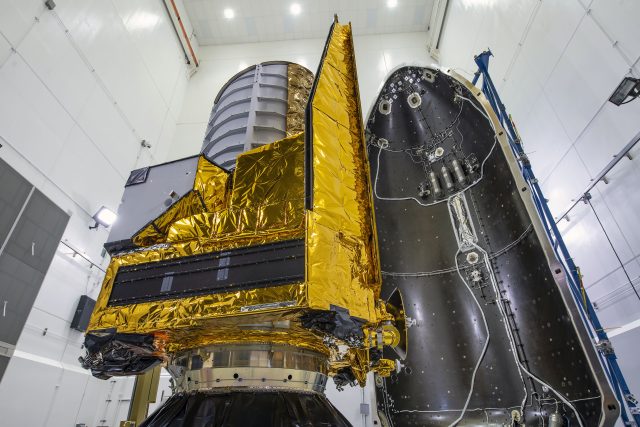
“The required amount of data that will be analyzed and delivered back, the numbers are absolutely staggering,” Hussain said. “This is what is required in order to answer what is arguably the most fundamental question in physics and cosmology today, which is what is the Universe actually made of?”
After more than 15 years of design, development, and testing, the Euclid telescope lifted off from Cape Canaveral at 11:12 am EDT (1512 UTC) aboard a Falcon 9 rocket. The launcher arced downrange heading southeast from the Florida coastline, with nine kerosene-fueled engines powering the Falcon 9 through the atmosphere in the first two-and-a-half minutes of the flight.
The rocket’s reusable booster stage released to begin a descent to a drone ship parked in the Atlantic Ocean, while the upper stage ignited its engine two times to propel the roughly 2.1-ton Euclid spacecraft onto a trajectory toward an orbit about a million miles (1.5 million kilometers) from Earth.
It will take about a month for Euclid to cruise into its halo orbit around the Sun-Earth L2 Lagrange point, a gravitational balance point commonly used by space-based observatories, including the James Webb Space Telescope.
Following three months of checkouts, first light, and calibration, Euclid should be ready to start its operational science mission in October. The telescope will scan about 15,000 square degrees of the sky with its visible and infrared instruments, primarily in the northern and southern sky, while avoiding brighter regions populated with light from our own galaxy and Solar System.
Euclid to solve ‘biggest embarrassment’ in cosmology
Dark matter has never been directly measured, but scientists have concluded that it makes up a little more than a quarter of the Universe. Dark energy, on the other hand, constitutes about 70 percent of the cosmos, and according to models, is responsible for accelerating the Universe’s expansion.
Guadalupe Cañas, a research fellow at ESA, called the vacuum in understanding the nature of dark matter and dark energy the “biggest embarrassment that we have currently in cosmology.”
“We know that 95 percent of our Universe is something that is totally unknown to us,” she said.
Euclid’s 3.9-foot (1.2-meter) telescope is about half the size of the primary mirror of the Hubble Space Telescope, or little less than one-fifth that of the James Webb Space Telescope. While that means Euclid won’t be able to study galaxies as old as Hubble or Webb can see, Euclid has the benefit of seeing a broader swath of the sky. Think of it as trading a telephoto lens for a wide-angle. “If you want to observe the Universe in a cosmological way, you don’t want to be restricted to particular areas,” said Giuseppe Racca, ESA’s Euclid project manager. “You really want to observe a lot.”
Scientists say it would take Hubble hundreds of years to complete the same extra-galactic survey as Euclid, which will cover in a week the same area of sky that Hubble has observed in its 33-year mission.

After an initial period of cosmic expansion after the Big Bang (known as inflation), the Universe’s growth decelerated until about five to six billion years ago. Cosmologists have found that the expansion of the Universe started accelerating at this point. Euclid’s observations will cover the period of time before and after the start of the acceleration.
Euclid will pursue signs of dark matter and dark energy using two methods.
One is called weak gravitational lensing, where astronomers will rely on automated processing to detect minute changes in the shape of galaxies caused by clumps of invisible dark matter on the line of sight between the Euclid telescope and its distant targets.
Distortions in the shapes of faraway galaxies are easily observable in close-up views taken by Hubble and Webb, but there should also be subtle effects from dark matter—at least that’s what scientists think.
“Everything looks normal, but when you do the statistics of those, you will find that actually, on average, these galaxies have acquired a net preferred direction (due to dark matter). It’s just extremely noisy,” Hoekstra said. “So this is why, with Euclid, we need one-and-a-half billion galaxies to really beat down the noise because, unfortunately, galaxies are not nice and round. If they were nice and round, we could do an amazing measurement, but galaxies have all kinds of shapes and sizes and that’s why we need all this data.”
Euclid will also help cosmologists study how barely perceptible fluctuations in sound energy in the early Universe, called baryon acoustic oscillations, led to the patterns of galaxy formation and clustering that spread throughout the cosmos over billions of years.
Ultimately, scientists will compare what they learn from Euclid with their expectations based on model predictions.
“If these predictions, to a certain accuracy, are not fulfilled, then we have something new in hand,” said René Laureijs, Euclid project scientist at ESA. “Then we can say Euclid is so precise that the predictions we have at the moment cannot be reconciled with our observations, and then we have maybe something new in hand, in terms of physics.”
SpaceX steps in to launch European space missions
The Euclid mission was originally slated to launch on a Russian Soyuz rocket from the European spaceport in French Guiana, but that option became unavailable after Russia’s invasion of Ukraine.
Euclid was already built and well into its final round of pre-launch testing when ESA had to search for a new launch vehicle. The backup option, a European Ariane 6 rocket, is still in development after years of delays.
That forced ESA to look overseas. Enter SpaceX.
European officials started discussions with SpaceX about one year ago, and ESA member states approved the switch to a foreign rocket—a thought that is anathema to ESA’s “buy European” policies—in October. Otherwise, Euclid would likely have remained grounded until at least 2025, when officials hope the new Ariane 6 will be flying and will have reached a level of reliability required to launch such a costly mission, said Mike Healy, ESA’s head of science projects.
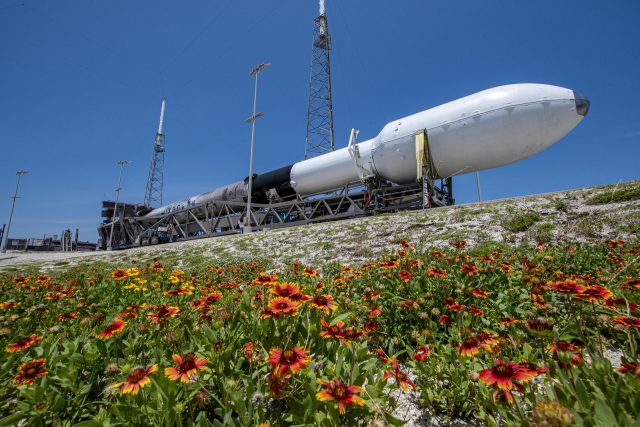
SpaceX and ESA agreed on a contract to launch Euclid last December, a little more than six months before the target liftoff date. At that time, officials hoped to launch Euclid at the beginning of July. It turned out that Euclid launched right on time, despite an “incredibly tense” period when there was uncertainty about how and when the mission might get into space, Racca said.
Engineers performed additional checks to ensure Euclid’s sensitive optics and telescope made of silicon carbide—which combine the properties of metal and ceramics—could withstand the stronger vibrations of SpaceX’s rocket.
SpaceX charged ESA about $70 million to launch Euclid, according to Healy. That’s about $5 million above the standard commercial “list price” for a dedicated Falcon 9 launch, covering extra costs for SpaceX to meet unusually stringent cleanliness requirements for the Euclid telescope. A grain of dust or a piece of hair on the telescope’s optics could ruin the mission.
SpaceX also provided a brand new payload fairing for the Euclid mission to reduce the risk of any contaminants falling onto the telescope. Most launches employ a payload shroud reused from previous missions.
Delays in the Ariane 6 rocket has also prompted ESA to agree to launch the agency’s Hera asteroid probe on a Falcon 9 rocket from Cape Canaveral in 2024. Earlier this week, ESA’s director general said an Earth science satellite called EarthCARE will also have to launch on a SpaceX Falcon 9 rocket due to problems with its European Vega C rocket.
And ESA, along with the European Union, is considering launching up to four Galileo navigation satellites on two SpaceX Falcon 9 rockets because European launchers are not ready.

